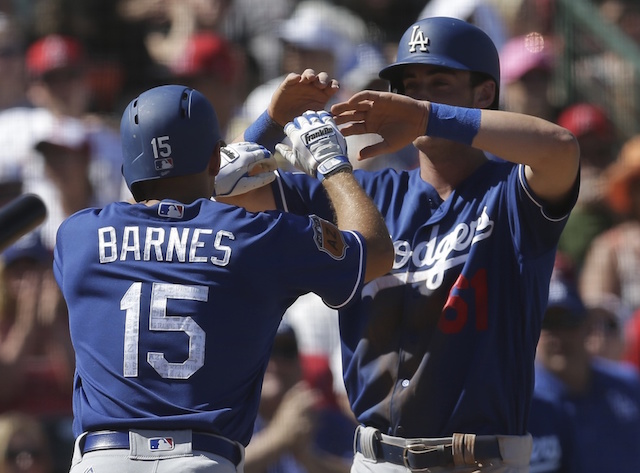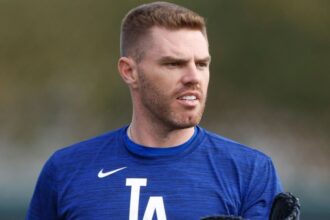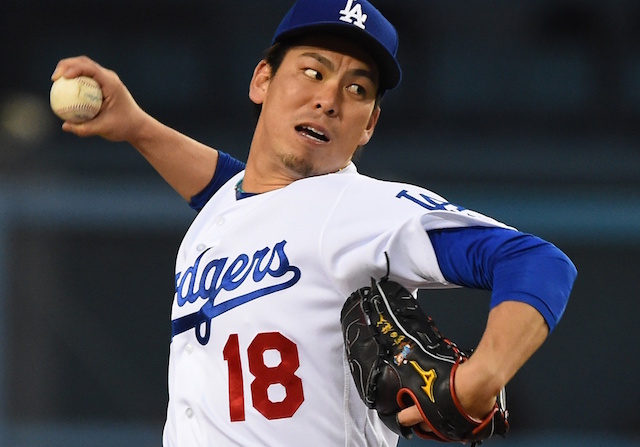PAGES: 1 | 2
While the Los Angeles Dodgers have traded away Jose De Leon, who would occupy a spot in the organization’s top five prospects for the 2017 season, it’s impressive how much talent remains at the top of the farm system.
Two of the most electric arms in the Minors, two of the youngest hitters in Triple-A Oklahoma City, and the oldest (and perhaps most unique) prospect in the organization.
5. Austin Barnes, C
In December of 2014, just two months after he was hired, Andrew Friedman made one of his biggest splashes as Dodgers president of baseball operations. He traded Dee Gordon, the then 26-year-old second baseman who was coming off an All-Star season in which he stole 64 bases, to the Miami Marlins for four players.
The biggest name the Dodgers received was lefty prospect Andrew Heaney, who was immediately flipped in a trade for Howie Kendrick.
A little more than two years later, the best player the Dodgers still have is Barnes. Originally drafted by the Marlins in the ninth round in 2011, Barnes climbed up to Double-A by his second full season and was knocking on the door to the Majors in 2014.
He made his Major League debut in 2015, though his playing time was sporadic. The same could be said about 2016, as he played in 21 games while collecting just 37 plate appearances.
Barnes’ offensive calling card in the Minors has been his ability to get on base. He draws walks at an impressive clip, earning free passes in more than 10 percent of plate appearances at nearly every Minor League stop. In fact, Barnes has almost as many walks (295) in his Minor League career as strikeouts (302).
Listed at a generous 5’10 and 190 lbs., Barnes doesn’t pack much pop into his offensive game. His swing plane is relatively flat and he seems more comfortable hitting line drives than trying to drive the ball out of the park. He’s hit just 46 home runs in 585 games in the Minors.
Behind the plate Barnes displays very good athleticism and is adept at blocking pitches. He’s also thrown out nearly 30 percent of attempted base stealers in the Minors. But what really sets him apart is his framing.
He has extremely quiet hands behind the plate and excellent timing, allowing him to simultaneously bring the ball back into the strike zone as he’s receiving it. On top of that, Barnes is athletic enough to have played both second base and third base during his career, even spending a game in center field with Oklahoma City last season.
Barnes seems more comfortable at second than third, where he has solid actions and hands. He has enough speed to have stolen 61 bases in the Minors, including 18 out of 21 last year with OKC.
The biggest hurdle for Barnes to overcome is not getting consistent playing time. There are probably several teams that would love to give Barnes their starting catcher gig, but unfortunately, he’s stuck behind one of the most productive backstops in the league.
The 27-year-old is set to be the Dodgers’ backup catcher this season, but he’s not going to realize his full potential by only playing part time.
4. Alex Verdugo, OF
There was no doubt that Verdugo would be a high draft pick in 2014. He’s left-handed and had been performing in front of scouts on the showcase circuit. Verdugo had the arm strength and the curveball. And, oh yeah, he was being scouted as a pitcher.
That’s what made the Dodgers’ second-round selection of him so surprising. It wasn’t that they drafted Verdugo, it was that they drafted him as an outfielder. He showed well as a hitter the previous summer, so being a pitcher with a low 90s fastball and a good breaking ball was a solid backup plan.
But it turns out the backup plan probably won’t be needed. Verdugo started hitting as soon as he started playing. In his debut season, he batted .353 between the Rookie Leagues. After a rough start to 2015, in which he developed and then got rid of a leg kick, Verdugo ended up hitting .311 in A-ball.
Then, last year, he went to Double-A Tulsa and batted .273 while being about four years younger than the competition. Verdugo’s main draw is his hitting ability.
He has a smooth stroke from the left side, allowing him to punish balls to both gaps. He makes a lot of contact, striking out in just 12.7 percent of his plate appearances with the Drillers. Vertigo hit 13 home runs in 126 games last season, and is big enough to hit for power.
Defensively, Verdugo is reminiscent of Joc Pederson. He doesn’t have a ton of speed but he seems to get to a lot of balls in center field. If he slows down as he gets older, Verdugo would fit in nicely in right field because of his excellent arm strength.
The aforementioned Pederson is going to be in center for a while, but the left field situation is anything but settled. Andrew Toles will have the chance to stake his claim, at least at the beginning of the year. If he doesn’t, Verdugo could get a shot before the season’s over.
CONTINUE READING: Ranking Yadier Alvarez, Cody Bellinger and Walker Buehler








